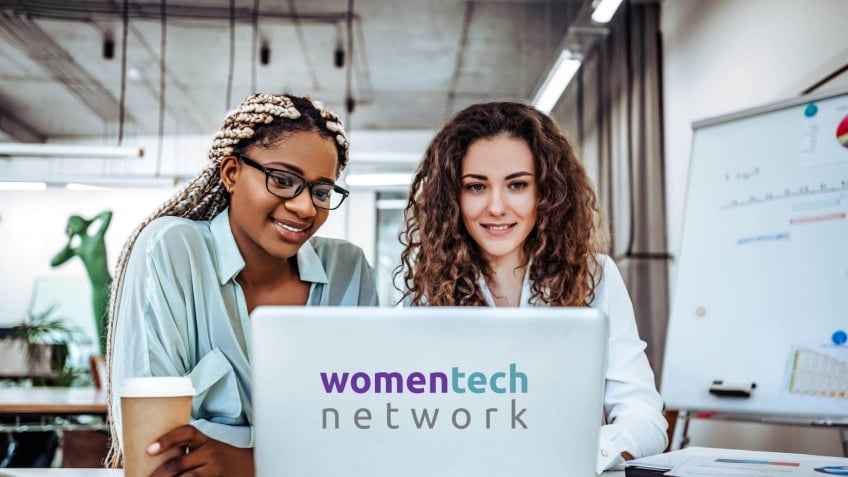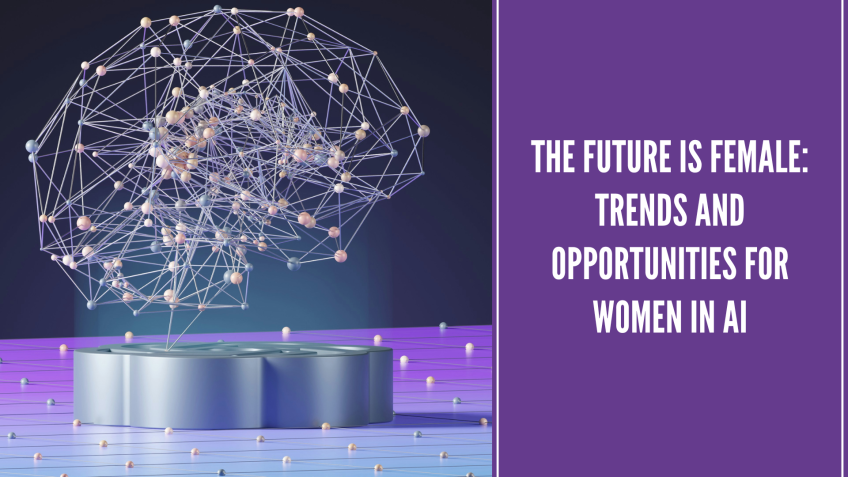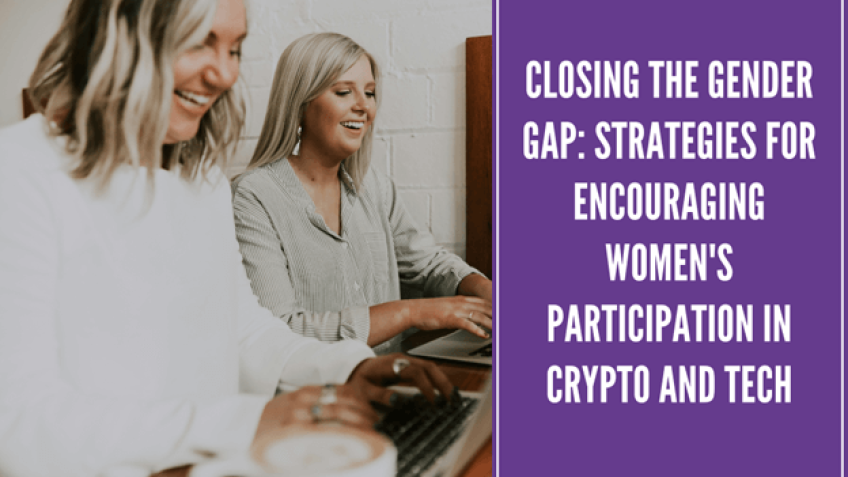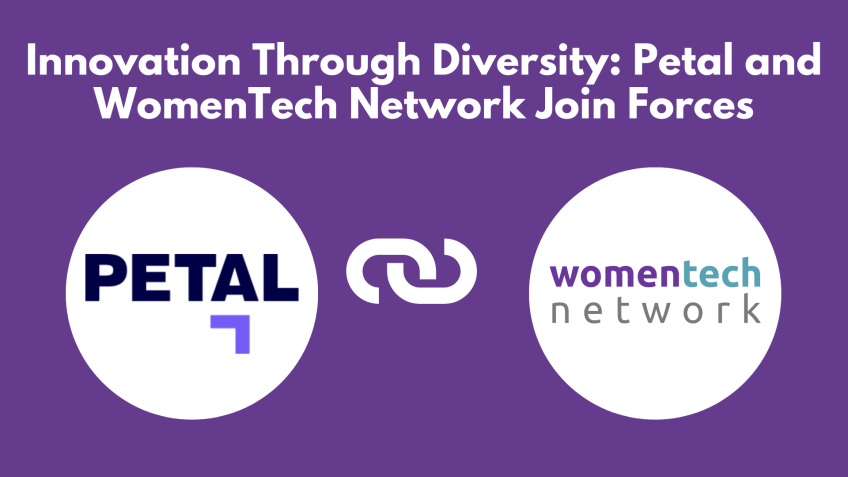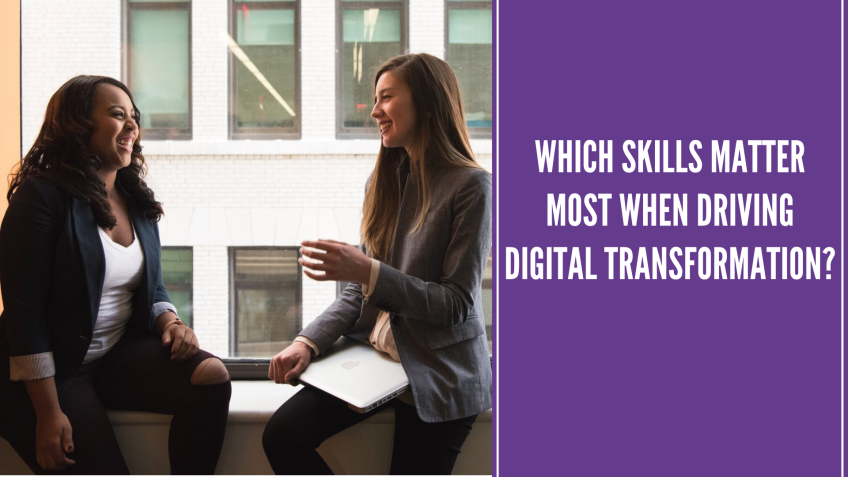How to Make Diversity, Equity, and Inclusion a Reality With Virtual Reality
Elise Smith
Co-founder and CEOHeather Shen
Co-founder and Chief Product OfficerDriving Diversity, Equity, and Inclusion with Immersive Learning
In today's fast-paced world, businesses need to think critically about how to make diversity, equity, and inclusion (DEI) a reality. With every organization having unique people challenges, many are turning to innovative solutions like immersive learning to spark cultures of inclusion, collaboration, and innovation.
The Power of DEI
The value of DEI for business outcomes, especially during times of market uncertainty, cannot be understated. Diversity within the workforce allows companies to better serve the wide array of customers and clients they cater to. Processes focus on levers that drive inclusion, belonging, and engagement, leading to increased productivity and innovation.
When employees feel appreciated and heard, their best ideas come to the fore, enhancing outcomes. As we navigate a rapidly evolving society, diversity, equity, and inclusion need to be inclusive for all individuals, fostering a climate where everyone can thrive.
Incorporating Immersive Learning
Over the recent years, immersive learning has emerged as a powerful tool to aid businesses in not just DEI but also in creating workplaces that work for everyone. Companies, like Practice Labs, are leading the way by combining cutting-edge technology with research-backed curricula to deliver impactful learning experiences. This approach ultimately drives real behavior change at scale and promotes diversity, equity, and inclusion in culture, policies, products, and services.
Delving into the Business Case for DEI
- Having a diverse workforce means you can better serve a varied client base and improve productivity.
- Inclusion, belonging, and engagement lead to more significant success with innovation and productivity.
- Creating safe spaces for giving challenging feedback and hearing all perspectives produces superior outcomes.
The Shift to Immersive Learning
As technology continues to advance, virtual reality (VR) and immersive tech are gaining traction for DEI work. Research shows that participating in immersive learning can significantly enhance empathy and soft skill development. For instance, Practice Labs reports that their immersive learners were 15% less likely to look for alternate work, showcasing the potential of immersive learning for DEI.
Making the Most of Immersive Learning
While immersive learning can be emotionally potent, success requires embedding it within a broader learning strategy and focusing on continuous learning. For any learning scheme, success should truly be measured by the behavioral change in individual learners or cultural or systemic change in the organization. This change involves acquiring and applying skills based on learning experiences and adapting real-world behaviors.
Tracking the Impact
In achieving DEI success, companies should not overlook the power of metrics. Assessing the impact of immersive learning on aspects like team engagement, productivity, and talent retention helps in understanding its practical value. When implemented correctly, immersive technology can provide scalable and affordable solutions that deliver impactful and lasting results.
In conclusion, utilizing immersive learning presents a unique opportunity for companies to drive diversity, equity, and inclusion successfully. This shift not only improves the work experience for all employees but also encourages an inclusive culture that fosters collaboration, innovation, and growth.
Video Transcription
Thrilled to get to be in conversation with everyone and is part of the Women in Tech Global Conference. Thank you Women in Tech Network for hosting my co-founder and Chief Product Officer Heather.And I um welcome to uh how to make diversity equity and inclusion of reality with virtual real. I'm Lee Smith. I'm the co founder and CEO of Practice Labs. And I just feel so grateful because in my role, I get to work with DE I and L and D and business leaders from some of the world's largest companies thinking about how to solve some of their most pressing people challenges by inspiring a culture of inclusion, collaboration and innovation.
And uh really, this is at the heart of what we'll get to discuss today. Why DE I is so valuable for business outcomes, particularly during times of market uncertainty and how immersive learning is emerging as one of the most powerful and impactful ways that businesses can move the needle and not just DE I but really on creating workplaces that work for everyone uh but also creating products and services that serve everyone.
So excited to dive in. But before we do I would love to have Heather um my co-founder, my confidant and Practice Labs. Chief product officer, share a little bit more about what we do at Practice Labs.
Hello. Hello, everyone. It's so exciting to be here. I'm thrilled to be in community with and to hear from so many other inspiring women leaders in this industry. So to give a little bit of background, frais Labs is an immersive learning company that empowers organizations to build more inclusive and effective workplaces. Our platform combines cutting edge technology with research back curricula and actionable insights to deliver impactful learning experiences and really drive real behavior change at scale. We are committed to promoting diversity, equity and inclusion. All that we do including helping our clients and partners embed the E I best practices in their culture policies, products and services to what Elise was saying earlier. So I'm really excited to be having this conversation or at least where we'll be asking each other a few questions and we'll also be leaving a few moments at the end to answer any questions that come from the audience. So before we dive in Anthony, who's on our team who just mentioned uh that they're in the chat uh will be monitoring this chat so that if you have any questions, please add them there. So let's dive in.
Uh let's start off by just talking about the business case for Dei. A lot of people have been making this argument for. Well, it seems like a really long time now, a lot of companies and research already have shared reports on how the E I boost productivity innovation culture and ultimately the business bottom line. But I think a lot of companies have struggled to get DE I right, if we break it down, what exactly is the business case for DE I, where are companies struggling to get it? Right.
Yeah, Heather, I mean, I think we talk about this every day with our teams, with our clients, with our learners. But really the story plays out in that having a diverse workforce, uh employees from all different backgrounds means that you're able to serve the diversity of the customers and the clients that you have, you can expand productivity. Um But that, that narrative actually isn't fully complete because really what we need to do is focus on the levers that drive inclusion, belonging and engagement. Because once those three things are in place, inclusion, belonging and engagement, what we know to be true is that companies have greater success with innovation, they have greater productivity and it's makes sense, right? Like when people feel like they can bring their best ideas to the table that there is safety in challenging and giving feedback and that all perspectives are actually heard and listened to. Well, no wonder that has differentiated outcomes and you know what we sometimes say and think about at practice is that while de and I is in this moment of some sight, like there's some uh it's a term that doesn't always land positively with everyone. Right?
We're so siloed in our communities and society that uh there, there's a little bit of a, a cultural moment happening and I think it's tied to this notion that diversity, equity and inclusion hasn't always been inclusive for folks. And it's why, and sometimes we think it's a little bit of a misnomer that oftentimes when we use that term, we're really just ensuring that we aren't causing harm and that we're actually creating more value for everyone. And we see success with uh when we see that meaningful change in behavior uh and the way to change behaviors to ensure that everyone uh feels included that they belong, that harm isn't done is by helping people build the skills, the knowledge and then actually practicing those that skill and that knowledge to better collaborate to better work across difference.
So that when you enter that workspace, which is often the most diverse space that many of us have entered because of how segregated society is, we're actually able to inspire psychological safety, create peak performance within teams because there is an understanding of how to work with folks who might be different than you.
Absolutely. I love how you are tying that de I is really at the heart of how do we inspire psychological safety. How do we have peak performance across our teams but, you know, I think bringing us to this current moment, there is so much uncertainty in this market, there is a lot of change happening. Uh And we see this deep need to get employee engagement and belonging, right? But at the same time, we're seeing all these really large companies, uh think about what, where can they cut and how do they think about sustainable business? And so, uh unfortunately, we're seeing that some of these programs are the first to be cut. Why do you, why do you think that focusing on de I is especially important during these times? And how can companies make sure that their efforts in this area are not de prioritized when faced with financial challenges?
Yeah, I mean, it is such a, it is such a good question and it's one that we, you know, I've heard in numerous conversations, not just over the last couple of months, but maybe this, the past couple of weeks and I think it comes down to this fact that we've, some of us have and, and, and, and unfortunately, we've separated the work of Den I from the actual business work that we have to do that, you know, you go through your day to day job.
Um And then also there's de I training or, oh, also there's like I should think about Den I, but it's not in the flow of work. And I think what we need to do is reframe and reposition what DEN I is. That's why I say sometimes it's a misnomer because really it comes down to solving business problems just like any other functional department work project. Um It's about focusing on people giving them the support and training, they need to, to meet that modern diverse often global workforce.
And I think what I'm hearing from chief learning officers, learning and development leaders, chief diversity officers and really just functional business leaders from uh you know, directors of engineering to heads of sales is that in these, particularly in these uncertain times, it is the moment when companies should be building skills related to agility, related to resilience related to navigating ambiguity.
Um And we've seen recent reports that soft durable or human skills are often among the highest prioritized for businesses, not just in this year, but in the next year, skills like management in communication, inclusive leadership, giving feedback, all of those things are so necessary right now.
Um And I think, you know, Heather, you, you and I know this, that this is, this is why we started practice. It's to improve people's experiences at work um particularly for folks from underrepresented backgrounds who workplaces haven't always been set up for. Um But it's also because the ways that de I training has been done, like I said, separate in a different box is something to do. Uh check the box and move on with your day to day job hasn't created the outcomes that we've been looking for. And despite, you know, the numbers say over 8 billion that have been invested in DE I tech and training over the last year, uh 60% of employees feel less connected to their coworkers. And more than half of the workforce who left their jobs say it was because they didn't have a sense of belonging. And, you know, I, I think it makes it clear that this isn't just a people problem, right? It's a, it's a business one. and the cost is often employee turnover resulting in trillions of dollars lost globally per year. Not to mention when your best talent walks out the door and into your competitor, the loss of value. And so, you know, we talked about this a lot when we started practice Heather.
But I, I'm curious if you would share with this group, what inspired you to start working in VR and immersive tech? Why did you believe it was a game changer for Den? I,
yeah, I feel a little silly sharing this with you at least because so much of this story I feel like is shared between the two of us. But for folks on the line, uh I come from, I come at this from both my own personal passions and my professional experiences. Uh I grew up as the daughter of immigrants, both my parents immigrated from China and growing up just had to think about how do I marry my own identity as Asian American and grapple with these questions of belonging and inclusion. And I think it really comes to a head when you think about workplaces and places that we frequent every day. And so as I was thinking about, what kind of impact do I wanna have with my work and where do I want to spend my time and energy? I was really drawn to this idea of technology as a way to change the way that we work with one another, communicate with one another, learn from one another. And so ended up studying electrical engineering at Stanford, got introduced to virtual reality when I was there. Uh really inspired by the fact that it was this immersion technology. Uh You know, at the time, I think the headset was heavy, it hurt my neck when wearing it, it was tethered, but I knew there was something there. I felt really inspired by the rate of change.
And so ended up going to NASA where I was researching computer vision and augmented reality as ways to help pilots take and land more safely. Just saw firsthand that there was a true training outcomes differentials between what you could do in A R and VR versus the traditional learning mechanisms. Uh continued on to Microsoft where I worked on the Hololens and Microsoft at the time was thinking about how do you apply A R to these wide scale industries? Really think about enterprises as a whole. And um ultimately, by the time I went back to school for my master's had the good fortune of meeting Elise when she was there. Um we were able to bond over the need for DE I work these personal passions that both of our lived experiences brought and the opportunity for immersive for DE I training. You know, I think a lot of our work is rooted and inspired by uh the virtual human interaction lab at Stanford where they really focus on how do we tie VR to empathy building.
Uh For example, I think there was research that came out of that lab that showed that if you participated in a VR experience detailing what it was like to be homeless, it actually made people exhibit more empathetic behaviors to homeless people, more likely to support affordable housing than other participants in the study.
And I think across the research spectrum, um immersive learning has proven results. You know, PWC has shown that VR based learners are 40% more confident in applying their learnings than those of you who use more traditional L and D content. And so there's clearly something here with immersive learning, being able to show and develop empathy and show soft skill development that way. Um Even at practice, as we're thinking about this and measuring the impact this whole conversation about RO I making sure that we're tying tying this to make uh de I training A more uh a, a greater reality. We see this impact firsthand. At a fortune 100 software company, we saw that practice of learners were 15% less likely to look for alternative jobs. 8% more motivated, 7% more engaged than non practice learners. So there's clearly something here that's immersive learning is able to unlock and un tap within this environment.
Yeah. No, I mean, this is, this is what we do day and night is think about that impact of immersive learning. And I think obviously your personal story, your background was so inspiring to me when we met and, and really being able to work with you and, and go on this journey has just been such a privilege. So um we talked about some of the stats, some of the impact how it's being deployed, what research is showing. But do you think that immersive learning itself is enough? You know, what are, you know, when we thought with, not just with practice, but what we've seen in the field, what are common pitfalls that you think it's important to name when companies uh uh or that company should avoid when they start on an immersive learning journey?
Yeah. It's a great question because, you know, I think immersive learning as a whole or an immersive experience can feel so emotionally powerful. But once you see the real impact, you have to think about this not as like a one off experience or a stand alone experience. But really how do we embed this within a broader learning strategy and really think about this in terms of continuous learning going on this learning journey, as opposed to just one or two experiences. So ultimately, the success of any learning should be measured by the behavior change in an individual learner or by a cultural or systemic change of the organization. That is really what we're trying to get at here is not just, you know, how do we pull at the heartstrings at an individual, but really thinking about behavior and systemic change. So our learners acquiring and applying skills based on their learning experience. Are they changing their real world behaviors and how they collaborate with colleagues? Um One way that we think about measuring this is connect immersive learning experience to the actual workplace where they can practice strategies between modules, complete commitments between to apply their learnings.
You know, for example, we have an inclusive hiring module where learners are asked to commit to reviewing their hiring practices and leveraging tools like standardized rubrics or interview guides, or maybe they can just practice applying a framework that they learned in an immersive environment for feedback in short, just in time scenarios.
So that tied with peer learning through group discussions or learning buddies really helps drive accountability and deepen the connection from what they see in immersive experience to the real life workplace. Um And ultimately, none of this is possible or meaningful? If you don't measure the organizational impact, are teams more engaged? Are they more productive? Does it improve talent retention? You know, at practice, we have a client impact team that takes a really consultative approach where we work with the E I and learning leaders to showcase how immersive training achieves their goals and connects outcomes to retention engagement and overall company culture. So ultimately, we need to work with solutions and think about solutions that prioritize tracking these metrics or provide leading indicators to work with people analytics data.
Yeah, I mean you shared so many nuggets um for folks who are thinking about deploying immersive learning some of the pitfalls but also where there's opportunity and it's that like you, like you just said, it's that connection to that real business outcome, that real ro I that proof point that this is working.
So I think we only have about four minutes left but it looks like there are a couple questions that have come up. Um The first is what advice do you have for teens getting started with immersive tech
is a great question. I think uh from my point of view, it's never too late or too early to get started. I think it is about just taking that first step, making sure that you have the relevant partners on board, whether it's DE I partners LND hr people analytics, like all of the folks that you need to make sure we have a successful roll out executive buy in and, and making sure that the communications is really clear across the, across the spectrum where we know what we're trying to drive.
We know that what that we have an aligned end goal and it's all about the strategy um of rolling it out.
Yeah. Yeah. Um And again, only three minutes left. So we'll, we actually will try and go quick, but it looks like folks really are trying to think about how to get started. So is immersive learning actually scalable.
Uh I mean, I think that's a great question. When people think about immersive learning, they always think about the headsets and like being able to get it set up and all of the friction that isso is associated with not knowing uh or like adopting a new technology. Uh One of the things that we are trying to re uh define and make sure that it's clear is that mostly tech can span headsets, but it can also span web browsers and mobile devices. Uh And we found at practice labs that the web experiences are just as powerful as headsets and can be even more affordable and scalable at the enterprise scale. So especially when you think about instructor led or elearning training, immersive really comes at that competitive price point at a scalable uh approach without sacrificing the impact. In fact, probably being even more impactful.
Yeah. No, I think, I think that is spot on. I, I think that's exactly what we've seen with our partners, what we're hearing and reading in the field in the market. And so I know we're running out of time. Heather last question for you. What brings you the most joy in getting to work in product and technology? Given this is a women tech network.
Wow. What a great question. Uh For me, I think I get the most joy from understanding of per uh our clients and learners problems. Uh really kind of being able to pinpoint their pain and then coming up with some creative solutions that address it directly. I think for me, one of the most meaningful parts of starting practice was around when a learner actually reached out, he had just rolled out one of our very first modules. It was about hiring and stereotype type threat and this learner, you know, types in their community. Slack group. Wow. I have never been through anything like that. I've been experiencing stereotyped stereotype threat my entire life, but I never had the language to describe it, but that was exactly how I felt. So that was truly one of the most impactful moments for me.
Absolutely. It's not just the organizations and their outcomes, it's the individuals and their lives and their experiences. Um Heather, it's always so fun to be in conversation with you.
At least it's always a pleasure. Thank you, everyone for attending. Uh you know, listening to our, our conversation and being in community together, really excited about this.
Thank you all so much. Bye bye.



